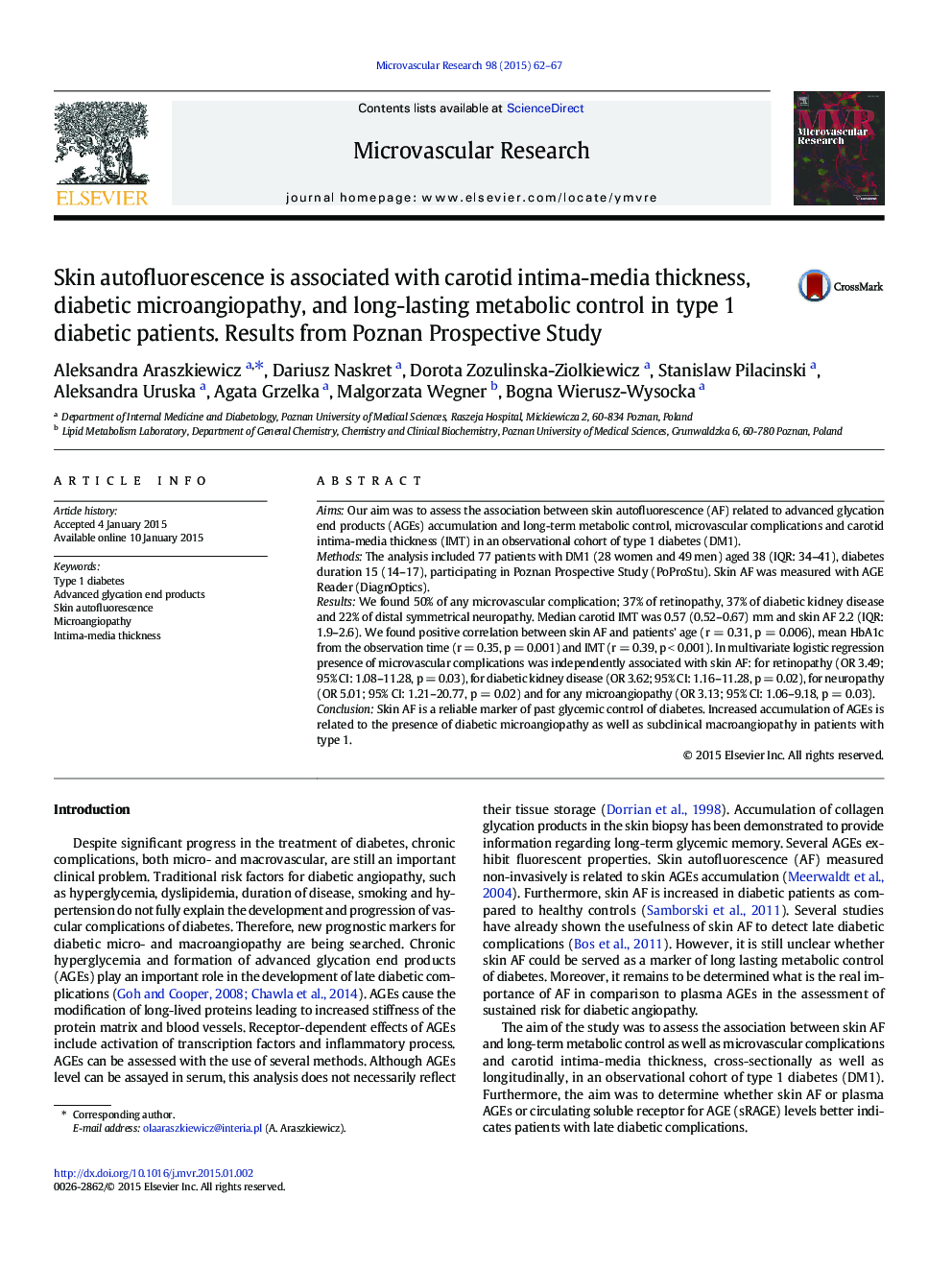| Article ID | Journal | Published Year | Pages | File Type |
|---|---|---|---|---|
| 1994816 | Microvascular Research | 2015 | 6 Pages |
•Skin autofluorescence is a reliable marker of past glycemic control of diabetes.•Skin AF is related to subclinical macroangiopathy in DM1 patients.•Skin AF, but not plasma AGEs or RAGE levels, is related to late diabetic complications.
AimsOur aim was to assess the association between skin autofluorescence (AF) related to advanced glycation end products (AGEs) accumulation and long-term metabolic control, microvascular complications and carotid intima-media thickness (IMT) in an observational cohort of type 1 diabetes (DM1).MethodsThe analysis included 77 patients with DM1 (28 women and 49 men) aged 38 (IQR: 34–41), diabetes duration 15 (14–17), participating in Poznan Prospective Study (PoProStu). Skin AF was measured with AGE Reader (DiagnOptics).ResultsWe found 50% of any microvascular complication; 37% of retinopathy, 37% of diabetic kidney disease and 22% of distal symmetrical neuropathy. Median carotid IMT was 0.57 (0.52–0.67) mm and skin AF 2.2 (IQR: 1.9–2.6). We found positive correlation between skin AF and patients' age (r = 0.31, p = 0.006), mean HbA1c from the observation time (r = 0.35, p = 0.001) and IMT (r = 0.39, p < 0.001). In multivariate logistic regression presence of microvascular complications was independently associated with skin AF: for retinopathy (OR 3.49; 95% CI: 1.08–11.28, p = 0.03), for diabetic kidney disease (OR 3.62; 95% CI: 1.16–11.28, p = 0.02), for neuropathy (OR 5.01; 95% CI: 1.21–20.77, p = 0.02) and for any microangiopathy (OR 3.13; 95% CI: 1.06–9.18, p = 0.03).ConclusionSkin AF is a reliable marker of past glycemic control of diabetes. Increased accumulation of AGEs is related to the presence of diabetic microangiopathy as well as subclinical macroangiopathy in patients with type 1.
